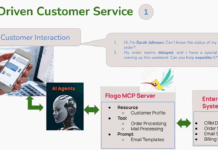 Being a great boss isn’t easy. Heck, just trying to be an “okay” boss takes a ton of effort. The struggle to get employees to do their very best everyday is an ever-changing battle. If you apply too little pressure, you might create unproductive slackers. Too much pressure, you risk employee burn out or sloppy returns. So how do managers create an environment where employees are not simply doing the bare minimum just to keep a steady income?
Being a great boss isn’t easy. Heck, just trying to be an “okay” boss takes a ton of effort. The struggle to get employees to do their very best everyday is an ever-changing battle. If you apply too little pressure, you might create unproductive slackers. Too much pressure, you risk employee burn out or sloppy returns. So how do managers create an environment where employees are not simply doing the bare minimum just to keep a steady income?
The concept is really simple (see below); apply just the right amount of pressure and employees will perform at their maximum potential.
So why is this this pressure point is so difficult to find? Perhaps you are concentrating on the wrong metric. Rather than focus on how much pressure to apply, concentrate on what kind of pressure gets workers motivated and producing their best. Setting impossible deadlines and piling unmanageable tasks will without a doubt send employees over the edge of the pressure curve, but a highly effective kind of pressure would be one that creates intrinsic motivation, the self-driven motivation to do their best. It changes an employee’s mindset from feeling like they have to do it to genuinely wanting to do it. A great way to inspire intrinsic motivation is through accountability.
Now that may sound a bit contradictory, but according to studies, workers who meet someone that is affected by their results – colleagues, coworkers, customers – can end up being up to 20% more productive than those who are not exposed to anyone outside of their direct circle. The problem is that many employees feel isolated from their company, and don’t feel part of the bigger picture – a feeling that can be easily reversed with a little context on an enterprise social platform. Here’s a scenario:
Jane is asked by her direct supervisor to add a feature to a product. Normally, her motivating factor would simply be to do what her boss told her. However when checking her enterprise social network, Jane discovers that several employees have already been talking about it: an executive initially suggested the idea; a Salesperson wants to pitch the feature to a huge client; and a Customer Rep has already been getting multiple requests. Suddenly, Jane realizes the context and weight of her project. This turns into positive energy, motivating her to work even harder on the new feature.
To get employees working their hardest, maybe all they really need is social context for why something is important. Maybe all they need is an enterprise social network.





